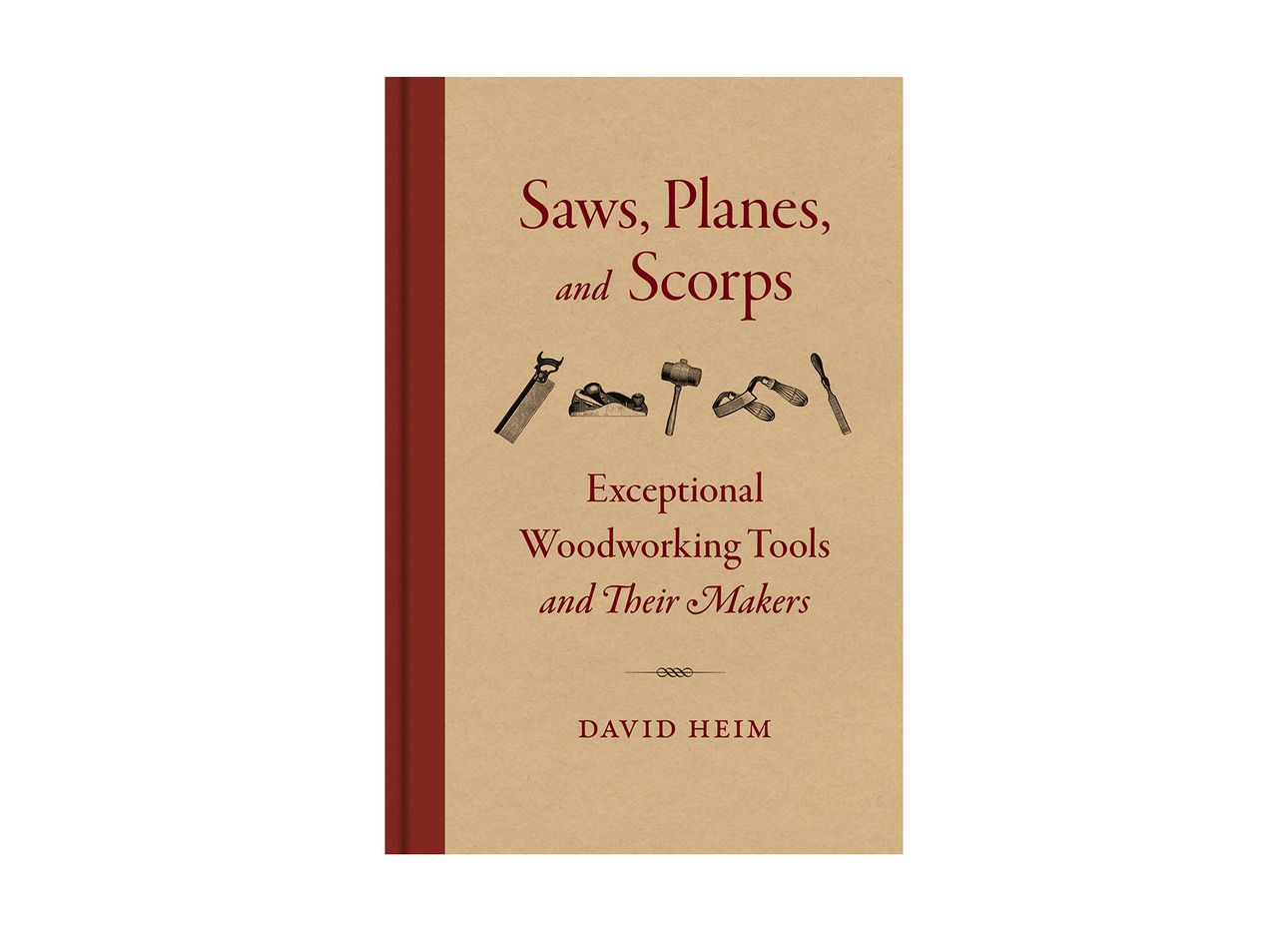
The Seductive Appeal of Handmade Woodworking Tools
High-quality woodworking tools are beautifully crafted objects in and of themselves. Traditionally created by artisans, these precisely tuned instruments can feel particularly satisfying in a woodworker’s hand, and can allow for more detailed creative control.
Author David Heim would know: an avid wood-turner who served as an editor for Consumer Reports and Fine Woodworking magazine before retiring from full-time work, he makes bowls, serving platters, vases, and other items on a lathe from his home in Oxford, Connecticut. His new book, Saws, Planes, and Scorps: Exceptional Woodworking Tools and Their Makers (Princeton Architectural Press), showcases his vast knowledge of the field. Heim takes readers inside small shops and factories around the world, telling stories about toolmakers and the surprising range of implements they produce, including awls, spokeshaves, travishers, and adzes. There’s a profile on woodworking influencer Christopher Schwartz; a spotlight on the Japanese technique nunome zogan, which metalsmith Seth Gould uses to apply gold embellishments to his tools; and a photo essay on the more than two dozen hammers made by blacksmith Brent Bailey, which include the teardrop-shaped Hombre framing iteration for concentrated blows and a cross-peen version with a six-pound geometric head.
To better understand the appeal of handmade woodworking tools, we asked Heim about the experience of using them. Here, he explains the value of a device’s performance and appearance, and why the role of hand tools in woodworking is more relevant now than ever.
What defines a skilled woodworking toolmaker?
In order to make a good tool, you have to be kind of obsessed with accuracy. And consistency, too. Some of the people who make really good measuring tools work to half of one thousandth of an inch—it’s barely perceptible. Nearly all of the people that I feature in the book are that way. They’re just obsessed with making things accurate, and with making things better than anybody else can.
What does it feel like to hold one of their tools in your hands?
Let’s talk about hand planes. If you go to a hardware store and buy a hand plane, that might cost you twenty-five or thirty dollars. You’ll come home, take it out of the box, and try to [shave layers off] of a board. It’s going to give you a workout! It’s not going to work well, because it’s been hastily manufactured to loose tolerances; the blades are probably not very sharp. You’ll likely struggle with the plane for ten or fifteen minutes, put it aside, and never touch it again.
If you spend ten times what you spent at the hardware store for a plane made by artisans, like those at Lie-Nielsen Toolworks in Maine—one with an elegant steel-head handle and a cherry-wood knob—planing wood will be like ice skating: the instrument will move across the board so smoothly, you almost don’t realize that anything is happening.
What role does aesthetics play in forming a superior tool?
I once met a young man who makes hand planes. One of his designs is full of these gorgeous reverse curls. He said, “I did it because curves are sexy as hell.”
When you see a beautiful tool that’s been beautifully finished and polished like that, with metal that’s been finely crafted, you just want to pick the thing up and hug it. It’s just that attractive, and welcoming, in a way that a hand plane from a hardware store never could be.
Do you think hardware stores diminish the relevance of handmade woodworking tools today?
The role of hand tools in woodworking is probably stronger now than it has been since the days—three hundred years ago—when all you had were hand tools. The Industrial Revolution democratized tool-making and woodworking. You could get a set of tools from Sears Roebuck for ridiculously low prices. And there were factories all over the Midwest, all over Sheffield, England, that were turning out tools literally by the carload. They were everywhere, but they weren’t that good.
In this country, when we saw the revival of woodworking as a hobbyist craft in the mid-1970s, that brought with it a renewed interest in using hand tools—or hand tools in conjunction with a few power tools—as opposed to using nothing but power tools, which was kind of the way of working for many people through the forties, fifties, and sixties.
The presence of these toolmakers and the fabulous tools they create only makes woodworking more desirable, and easier, for people who want to do really high-quality work by hand. When you work with hand tools, your shop is a quiet, serene place. It’s just you and the tapping of the hammer on the chisel.
Do you see using hand tools as a form of meditation?
It’s a way to slow down, and to appreciate the stages of the construction that you’re going through. If you’re using good tools and you know what you’re doing, you’re at one with the tool in a way you can’t be with a power tool. The chisel is an extension of your hand; the saw is an extension of your arm. And the choices you make will determine the shape that the wood takes. Japanese woodworkers figured that out a long, long time ago. We’re just getting around to it.